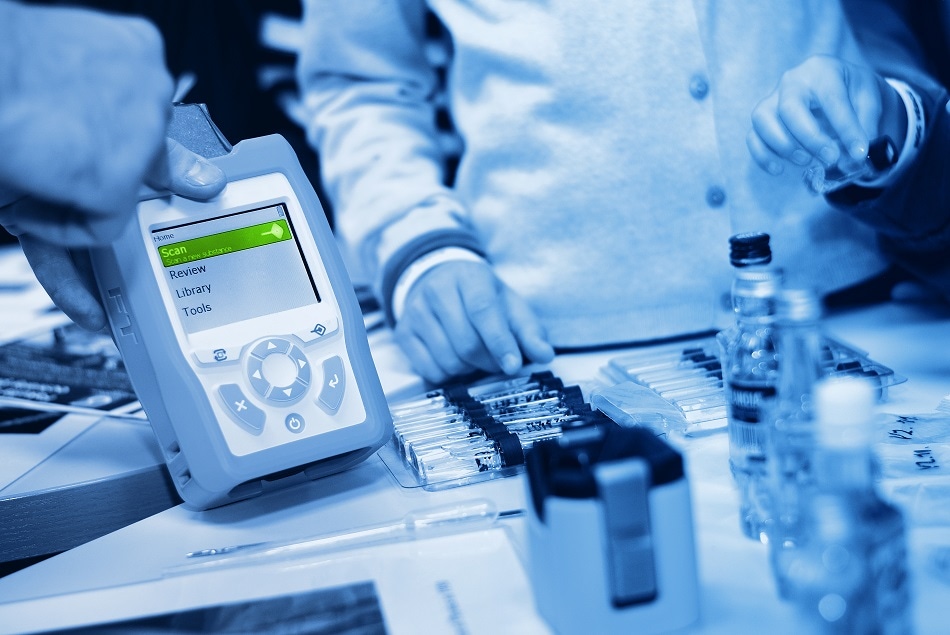Nov 25 2019
The development of new and advanced components of two-dimensional (2D) materials, such as graphene, necessitates tools to characterize their quality. Raman spectroscopy is the gold standard for this process, but its main disadvantage is low speed. Besides that, the laser light can also damage certain 2D materials.

Image Credit: Forance/Shutterstock.com
Researchers at the University of Twente have added a smart algorithm to the detection, leading to the “Raman” method working at least 50 times faster, and rendering it more “gentle” to sensitive materials.
Graphene is constantly raising the bar, as a robust, ultrathin 2D material that could also be the foundation for new components in information technology. There is a great need to characterize graphene devices. This can be achieved by using Raman spectroscopy.
Laser light is transmitted to the material sample, and scattered photons provide information about the vibrations and rotations of the molecules inside and consequently about the crystal structure.
On average, only about 1 in 10 million photons are scattered in this manner. This not just makes it tough to identify the correct information, but it is also quite slow: it may require half a second to image a single pixel. The question is whether Raman is still the method of choice, or whether there are better substitutes.
UT researchers Sachin Nair and Jun Gao use Raman spectroscopy as a preliminary point, but manage to enhance the speed significantly: they achieve this not by altering the method itself, but by incorporating an algorithm.
Noise Reduction
This algorithm is not unfamiliar in the realm of signal processing, and it is referred to as Principal Component Analysis (PCA). It is used to enhance the signal-to-noise ratio. PCA establishes the characteristics of noise and those of the “real” signal. The larger the dataset, the more dependable this recognition is, and the clearer the actual signal can be differentiated.
Besides that, modern Raman instruments include a detector known as electron-multiplying charge-coupled device (EMCCD) that enhances the signal-to-noise-ratio. The end outcome of this research effort is that processing a single pixel does not take half a second, but just 10 ms or less. It no longer takes hours to map a single sample.
A significant feature for vulnerable materials like graphene oxide is that the strength of the laser can be reduced two or three times. These are important steps ahead for obtaining a fast grip on the properties of the materials.
Multi-Purpose
Apart from graphene, the enhanced Raman method can also be applied to other 2D materials like germanene, tungsten disulfide, molybdenum disulfide, silicene, and boron nitride. Applications of the algorithm are not restricted to Raman spectroscopy; methods like atomic force microscopy and other hyperspectral methods could also gain from it.
The research was carried out by the Physics of Complex Fluids group of Prof Frieder Mugele, part of UT’s MESA+ Institute. The researchers partnered with the Medical Cell BioPhysics group and the Physics of Interfaces and Nanomaterials group, both of the University of Twente as well.
The research paper “Algorithm-induced high speed and non-invasive confocal Raman imaging of two-dimensional materials,” by Sachin Nair, Jun Gao, Qirong Yao, Michael Duits, Cees Otto, and Frieder Mugele, has been published in National Science Review, an open-access journal under the auspices of the Chinese Academy of Sciences.